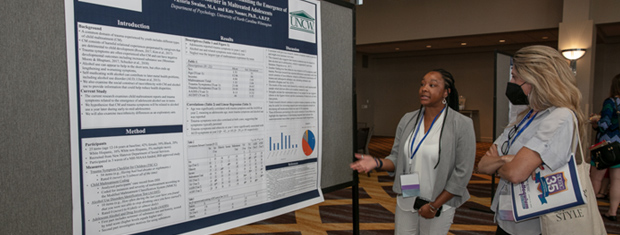




The APSAC Advisor is a peer reviewed quarterly news journal for professionals in the field of child abuse and neglect.
The APSAC Advisor provides succinct, data-based, practice-oriented articles that keep interdisciplinary professionals
informed of the latest developments in policy and practice the field of child maltreatment. It is designed to highlight
best practices in the field and publish original articles and current information about child maltreatment for professionals
from a variety of backgrounds including medicine, law, law enforcement, social work, child protective services, psychology,
public health and prevention in the U.S.
 If you wish to learn more about submitting an article to the Advisor, please click here.
If you wish to learn more about submitting an article to the Advisor, please click here.
This library contains Advisor issues dating back to the first issue in 1988. The most recent issue appears at the top.
Scroll down to select past issues by year and issue number. Once a publication appears in the box, you
can use the Enlarge button to open the document in a new window or tab (depending on how your browser is set up).
This will allow you to view the document with larger print.
To print a document, first use the Enlarge button to open the document in a new window or tab. Then use your browser's Print command.
To return here from a new tab, close the tab. To return from a new window, click your browser's Back button.
In the listing below, click on a year and issue number to see the articles in that publication.
2018 Number 2
Introduction to the Issue: Children and Adolescents in the Foster Care System
Despite concerted efforts in the early- to mid-2000s to successfully reduce the number of children placed into foster care, there has been an unsettling national trend in our child welfare system, with increasing numbers of children placed into foster or kinship care.
Coordinating Care to Provide Quality Health Services to Children in Foster Care
Children in foster care are more likely than their peers to have serious healthcare needs, yet many do not receive quality health care. This can have lifelong effects on the children individually and on society as a whole. This article briefly reviews the healthcare needs of children in foster care, identifies specific barriers to health care, and discusses methods that are being used to ensure the healthcare needs of children in foster care are addressed, including the use of a medical home, with recommendations for future research.
The Physical Health Needs of Children in Foster Care
There are over 400,000 children living in foster care in the United States. Of these children, 70% are placed into the foster care system because of substantiated abuse and/or neglect, with the remainder placed for behavioral and complex medical issues that extend beyond the biological parents’ ability to provide appropriate care. In addition to abuse and neglect, children placed in foster care may have experienced many other significant adversities that contribute to poor health. This article outlines some of the more common immediate and long-term physical health needs of this vulnerable population, and explains many of the barriers to care they face. Only through improved communication and community investment can we surmount these barriers and improve health outcomes for these children.
Meeting the Developmental, Behavioral, and Mental Health Needs of Children in Foster Care
Children and adolescents in foster care encounter significant developmental, behavioral, and mental health challenges. Though developmental delays and mental health conditions are prevalent in the foster care population, they are often unrecognized and untreated. Given the complex interplay between childhood trauma and toxic stress, this article argues for a comprehensive, trauma-informed approach to identifying and addressing the unique needs of children in foster care. This article discusses current recommendations for and limitations to screening for developmental, behavioral, and mental health issues in this vulnerable population. Additionally, this discussion addresses barriers to linkage to services, including the role of placement instability.
Medical Education and Foster Care
This article discusses education of trainees on the topic of providing medical care to foster care children. Curriculum devoted to this topic is needed in the context of this population’s unique healthcare needs. This article discusses curriculum content, and outlines ways to deliver the curriculum, including flipped classroom models and experiential learning through community partnerships.
Foster Care: Child Welfare's Responsibility and Challenge
Foster care offers children who cannot safely remain in their own homes an alternative family placement. The numbers of children residing in foster care in the United States have been steadily increasing, yet there continues to be a shortage of foster homes to adequately meet the need. Placement disruption further compounds the problem, with the U.S. Department of Health and Human Services reporting in 2017 that 35.7% of children who had been in foster care for more than two years experienced placement stability. To address challenges faced by the foster care system, a multi-pronged approach must be undertaken focused on foster home recruitment and retention. A review of the literature suggests adoption of key strategies.
The Confluence of Medical and Legal Advocacy: Selena's Story
Obtaining parental and even judicial consent for medical treatment of children in foster care is often a difficult and confusing process. Through the amazing story of Selena, a child in foster care with significant medical needs, this article takes the reader on her journey through the numerous obstacles she had to overcome in order to have a healthy life and a stable family. The authors explain that while the medical and legal systems involved in the child welfare system often operate independently, they emphasize the importance and extraordinary benefit to children when these systems collaborate.
Youth Transitioning out of Foster Care: A New Opportunity to Access SSI Benefits
The Social Security Administration issued a new policy that allows youth of all ages in foster care to apply for Supplemental Security Income (SSI) benefits up to 6 months before leaving care. This policy has tremendous potential to provide vital support to foster youth during a precarious transition and help them avoid homelessness, achieve successful reunifications, and access needed medical treatment. We propose the following best practices to increase foster youth’s access to SSI benefits: develop concrete transition planning protocols that include screening and applying for SSI benefits; incorporate specialists in the transition planning process; create centralized systems to store and share information; and develop a clear distribution of labor and accountability mechanisms to carry out the transition plan.
APSAC Advisor 30(2): Full Issue